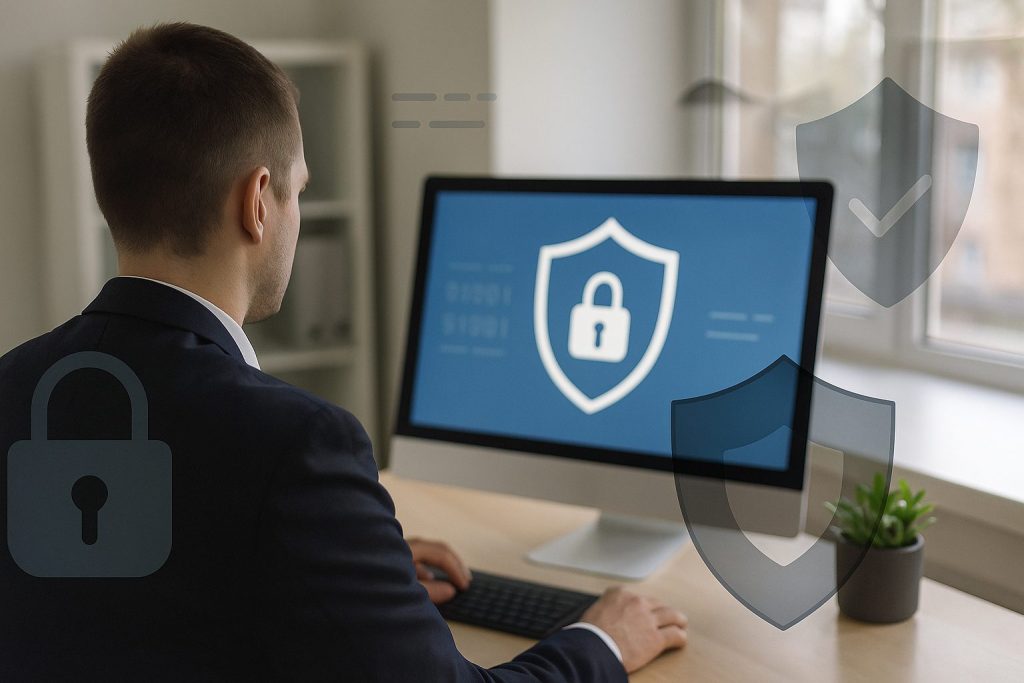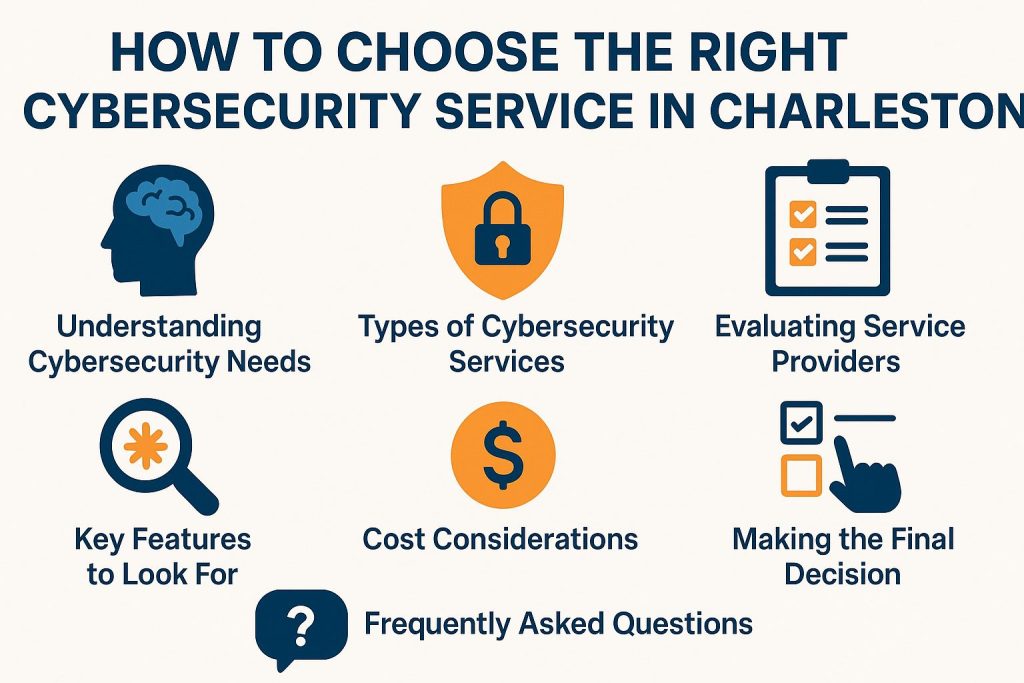7 Steps to Building a Cybersecurity Strategy for Small Teams

Today, small teams face unique cybersecurity challenges that threaten their operations and data. This article presents a simple seven-step guide to creating a cybersecurity strategy for small teams. Focus on identifying assets and risks. Analyze threats. Train team members on best practices. This helps organizations protect their digital environments and become more resilient to cyberattacks.
Understanding Cybersecurity Strategy for Small Teams
In today’s digital landscape, cybersecurity is a critical component for small teams that safeguard their digital assets and uphold operational integrity. These teams frequently encounter unique challenges arising from limited resources and expertise in cybersecurity. This underscores the necessity of developing a comprehensive cybersecurity strategy and adhering to security governance.
This strategy should prioritize risk assessment, the implementation of security policies and safety protocols, and the cultivation of a culture centered on data protection and incident response preparedness among team members. Furthermore, employee training and security awareness training are essential, as they equip staff with the skills required to effectively recognize and respond to cyber threats. For small businesses, integrating professional tech support can further enhance security measures.
Defining Cybersecurity and Its Importance for Small Teams
Cybersecurity includes practices and technologies that protect systems, networks, and digital assets from threats. This is crucial for small teams to maintain strong security. As cyber threats become increasingly sophisticated, small teams find themselves particularly vulnerable due to often limited resources and the absence of dedicated cybersecurity personnel. This vulnerability can lead to significant risks, including data breaches and the loss of sensitive information.
Small teams face challenges like phishing attacks, where fake emails trick users into sharing sensitive information, insider threats, and risks from third parties. Each member of a small team holds a crucial responsibility in safeguarding their digital environment. For those interested in enhancing their cybersecurity measures, investing in specialized IT security services can provide essential support.
By cultivating a robust security culture that prioritizes best practices-such as regular training, awareness of potential threats, and open communication-small teams can considerably reduce their risk profile and improve their cybersecurity compliance. This proactive approach fosters an atmosphere of vigilance that effectively deters cybercriminals.
Step 1: Identify Your Assets and Risks
The initial step in establishing a robust cybersecurity framework for small teams is identifying both digital assets, conducting information risk management, and assessing the potential risks associated with them.
This process involves a risk assessment to find critical data, such as personal information and intellectual property, and identify vulnerabilities that cyber threats can exploit.
Recognizing what requires protection is essential for implementing effective security policies, business continuity strategies, and strategies.
Assessing Your Digital Assets and Potential Threats
Assessing digital assets, conducting vulnerability management, and potential threats is essential for small teams to maintain effective cybersecurity. This process involves identifying all digital assets, including sensitive data, IT infrastructure, and assessing their vulnerabilities in the context of common cyber threats such as malware, phishing attacks, and unauthorized access.
Small teams can use techniques like penetration testing and threat detection. These simulate real attacks to find weaknesses in systems. Regular security audits and monitoring solutions are also crucial, as they allow teams to assess compliance with established cybersecurity frameworks like NIST or ISO/IEC 27001. For instance, a small startup may schedule quarterly penetration tests conducted by a local cybersecurity firm to uncover any gaps in their defenses.
Teams can use checklists for self-assessments. This helps strengthen internal policies, security protocols, and training programs. Regular assessments and available resources help small teams improve defenses against cyber threats.
Step 2: Establish a Security Policy
A comprehensive security policy is essential for small teams. It creates guidelines that improve cybersecurity and operational resilience.
A well-defined security policy outlines the organization’s stance on critical issues, including data protection, incident response, and compliance with regulations. For an extensive analysis on enhancing your security measures, explore our cybersecurity best practices.
This foundational document serves to guide employee behavior and decision-making when facing cybersecurity threats.
Creating Guidelines and Protocols for Your Team
.jpg_01.jpeg)
Creating specific guidelines is crucial. It ensures a unified approach to cybersecurity and data integrity. These guidelines should include best practices for cyber hygiene. This includes secure coding, zero trust, and proper use of firewalls and antivirus software.
Enhance these protocols with employee training. Focus on recognizing phishing attempts, weak passwords, and incident escalation procedures. Outline a strong response procedure for security incidents. Detail steps for reporting and containing breaches.
Foster a culture of security awareness. This helps employees feel responsible for protecting sensitive data.
For example, a company that held regular drills for cyberattacks saw faster response times during real incidents. This shows the value of proactive training.
Step 3: Implement Strong Password Practices
Strong password practices are vital for small teams. They enhance cybersecurity defenses. Educate team members on creating complex passwords, using password management tools, and updating passwords regularly. These measures minimize the risk of unauthorized access from compromised credentials.
Tips for Creating and Managing Strong Passwords
Strong password management is crucial for protecting sensitive information from cyber threats. Use best practices like combining uppercase and lowercase letters, numbers, and symbols. Password management solutions enhance security and authentication.
Experts recommend passwords of at least 12 to 16 characters. Avoid easily guessable information like birthdays or common words. Update passwords every three to six months to reduce the risk of unauthorized access.
Provide cybersecurity training for team members. This reinforces the importance of unique and complex passwords. This effort promotes a security-conscious culture that protects the organization from threats.
Step 4: Use Multi-Factor Authentication
Multi-factor authentication (MFA) enhances security. It adds protection for sensitive accounts, especially for remote work. MFA requires multiple verifications, like passwords with biometric scans or one-time codes. This reduces unauthorized access and strengthens authentication.
Enhancing Security with Additional Authentication Measures
In addition to MFA, using various authentication measures enhances security for small teams. These measures include biometric authentication, hardware tokens, and geo-location tracking. They verify user identity and protect against unauthorized access.
Organizations can explore these options to build a strong defense against breaches. For example, biometric authentication uses unique traits like fingerprints or facial recognition. This method offers security that is hard to copy.
Hardware tokens provide a physical way to control access. They are especially useful in places that manage sensitive information. Geo-location tracking introduces another layer of verification by ensuring that users are attempting to log in from approved locations.
When choosing authentication methods, organizations must assess their needs and threats. The chosen strategies should match their security policies and workflows.
Step 5: Keep Software and Systems Updated
.jpg_10.jpeg)
Small teams need to focus on keeping software and systems updated with the latest security patches for strong cybersecurity. Regular updates are crucial to fixing vulnerabilities that cyber threats may exploit, ensuring that security tools, network security, and software remain effective against emerging risks and challenges.
The Importance of Regularly Updating Software and Systems
Regularly updating software and systems is essential for safeguarding against cybersecurity threats and ensuring compliance standards that exploit known vulnerabilities. By ensuring that all software is current, small teams can effectively mitigate the risks associated with outdated applications and enhance their overall security posture.
Maintaining updated software not only protects against malware attacks but also contributes to improved performance and efficiency. This results in smoother operations and a better user experience overall.
For small teams aiming to implement effective update policies, it is vital to establish a regular schedule to ensure alignment. Encouraging a proactive approach to system maintenance can include:
- Setting reminders for updates
- Providing training sessions on phishing awareness and the significance of these practices
- Fostering a culture of vigilance among team members
By prioritizing system updates, small teams can strengthen their security while ensuring that their systems operate at optimal levels and improve cloud security.
Step 6: Train Your Team on Cybersecurity Best Practices
Training team members on cybersecurity best practices is essential for fostering a culture of security awareness and resilience within small teams.
Effective employee training programs equip staff with the necessary knowledge and skills to recognize cyber threats, respond appropriately, and adhere to established security protocols, including incident reporting, thereby safeguarding organizational data.
Providing Education and Training for Your Team on Security Best Practices
Providing comprehensive education and training for team members is a critical component of a robust cybersecurity strategy. By fostering security awareness and educating employees on best practices, organizations can significantly reduce the likelihood of successful cyberattacks and promote a proactive approach to cybersecurity.
To do this, use different educational methods.
- Hands-on workshops enable participants to engage directly with cybersecurity tools and techniques, thereby enhancing their practical skills in endpoint protection.
- E-learning modules offer flexibility, allowing team members to access valuable content at their own pace.
- Regular security assessments are also vital, as they help gauge knowledge retention and identify areas that require further training.
Using real-world scenarios and interactive tools makes learning engaging. It helps employees respond well to threats and strengthens their role in security.
Step 7: Monitor and Review Your Strategy Regularly
Small teams must regularly monitor and review their cybersecurity strategy. This helps them stay effective and adapt to new threats.
By implementing continuous monitoring practices, organizations can evaluate their security posture, identify areas for improvement, and adjust their strategies according to emerging security metrics and incidents.
This proactive approach is vital for protecting against evolving cyber risks.
Continuously Evaluating and Improving Your Cybersecurity Strategy for Business Risk
.jpg_11.jpeg)
Small teams must continuously evaluate and improve their cybersecurity strategy. This helps them stay resilient against changing cyber threats and adapt to cybersecurity metrics.
Organizations can enhance their security culture by using threat intelligence. Staying informed about the latest security trends helps them adapt their strategies to reduce risks.
Regular security audits are crucial. They provide insights into current vulnerabilities, encryption needs, and areas for improvement.
Engaging stakeholders fosters collaboration. It brings diverse perspectives on potential threats.
Ongoing education for team members is vital. It builds a knowledgeable workforce that can recognize and respond to security challenges effectively. Furthermore, embracing new security technologies helps organizations adopt solutions that address emerging risks. This enhances their overall security posture.
Frequently Asked Questions
What are the 7 steps to building a cybersecurity strategy for small teams?
The 7 steps are: identifying company assets, assessing risks, setting security goals, implementing security measures, creating an incident response plan, training employees, and regularly reviewing and updating the strategy.
Why is it important for small teams to have a cybersecurity strategy?
Cybercriminals often target small teams. They may have valuable assets but lack resources for strong security measures and backup solutions. A cybersecurity strategy can help protect their assets and prevent potential data breaches.
How do I identify my company’s assets for the cybersecurity strategy and ensure compliance regulations?
Start by making a list of all digital and physical assets, including hardware, software, data, and intellectual property. Then, prioritize them based on their importance to the business.
What is the role of risk assessment in building a cybersecurity strategy?
Risk assessment helps identify potential vulnerabilities, evaluate IT infrastructure, and threats to the company’s assets.
It allows small teams to prioritize their security measures and allocate resources effectively.
What should be included in the incident response plan for a small team?
An incident response plan should include steps to be taken in the event of a cyber attack or data breach, contact information for key team members, secure communications, and a communication plan for notifying stakeholders and customers.
How often should a small team review and update their cybersecurity strategy?
They should also regularly assess risks and implement necessary changes.




